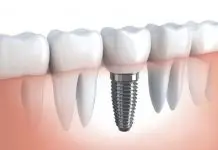Overview & Description
Normal changes occur in the bones, muscles, and joints as a person ages.
What is the information for this topic?
Aging can affect the bones, muscles, and joints in different ways.
Bone
As a person ages, the cells that produce and absorb bone become disrupted. As a result, bone mass is lost. This loss is most rapid in women aftermenopause, or the change oflife. Minerals such as calcium are lost. This can lead to osteoporosis, a condition in which the bones are weakerand more brittle. Osteoporosis is worsened by hormonal conditions, such ashypogonadism, which is a lowlevel of sex hormones in men, and hyperthyroidism, which is a high level of thyroid hormone.
Bones in the wrists, hips, and back are most likely to fracture or break. If aperson has severe osteoporosis, the weight of the body itself can even cause abone fracture. Bone loss mayalso lead to a loss in height. The vertebrae may become thinner and more brittle. Between the vertebrae are gel-like fluid-filled discs that can lose fluid as a person ages. This can cause the spinal cord to compress and contribute to a curve in the spine. The result is the “stooped” look often seen as a person ages.
Muscle
The muscles tend to decrease in size as people age. Starting at age 20, muscle mass or size begins to decrease. By age 40, most people have lost muscle mass. As a person ages, there is a decrease in the number and size of muscle fibers. Muscle tissue and strength decreases. More fat is deposited into the muscles as well. These factors cause the decreased muscle strength that occurs as people age. Lack of exercise, poor nutrition, use of alcohol, and a variety of illnesses and diseases may also contribute to muscle changes.
Joints
The joints are the areas between the bones that contribute to flexibility and movement. They consist of fluid, membranes, and cartilage. As a person ages, the fluid in the joints decreases. This loss of fluid may cause cartilage to rub together.
Joints begin to wear down as a person ages. They lose some of their functiondue to changes from arthritis.These changes can lead to jointpain, stiffness, and deformity. The disksbetween the bones in the spine become less rubbery and more prone to rupture.This can also cause a decrease in height.
All of these changes can affect a person’s coordination and posture. Walkingmay become more difficult. Movement is often slower, and falling becomes morelikely.
Prevention
Bone and skeletal mass forms early in life. Thus, prevention of bone loss needs to start early too. Almost 90% of skeletal mass is formed by the end of the teenage years. Early lifestyle changes may help prevent or decrease the effects of aging on the bones, muscles, and joints.
Thirty minutes of moderate weight-bearing exercise a day can slow changes in the muscles, joints, and bones. Weight-bearing exercise includeslow-impact aerobics, walking, running, lifting weights, tennis, and stepaerobics. A person doing moderate exercise can talk normally without shortness of breath and iscomfortable with the pace of the activity. The 30 minutes a day can be doneall in one session or may be broken up into smaller time periods.
Low-impact aerobics and wateraerobics are examples of exercises that minimize joint stress inelderly individuals and people with arthritis. Recent research has shown that people who dohigh-impact activities such as jogging have less bone loss as they age.
Individuals can also help protect bones, muscles, andjoints by:
- avoiding smoking
- eating a well-balanced diet, following the food guide pyramid
- eating 25 grams of soy protein daily
- getting effective treatment for conditions such as hypogonadism andhyperthyroidism
- limiting alcoholintake
- taking hormonereplacement therapy, for women who have reached menopause
Elderly individuals who are at risk for bone fractures from falling canminimize some of the risk by wearing undergarments that have padded shields atthe hips.
Article type: xmedgeneral













































